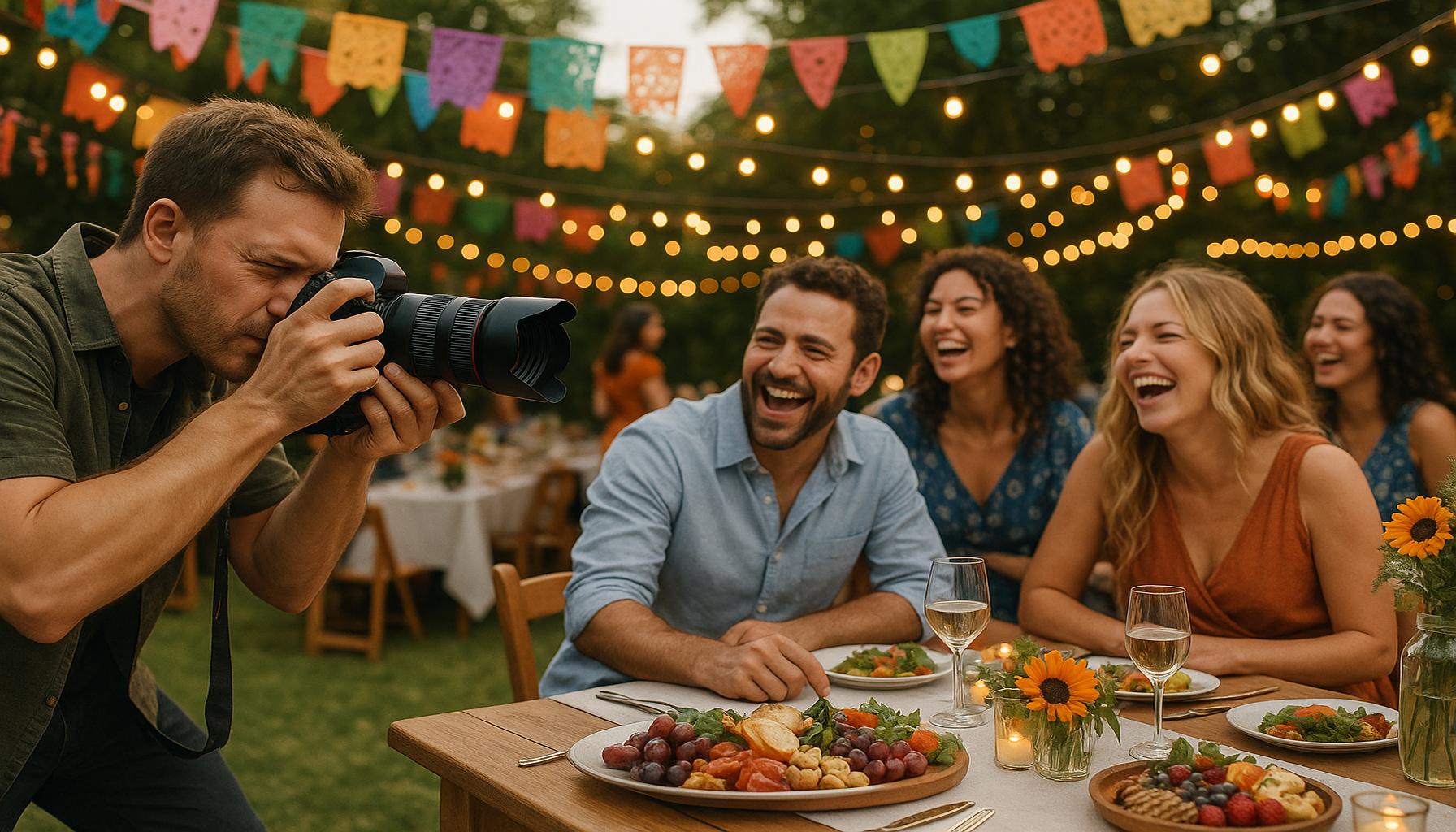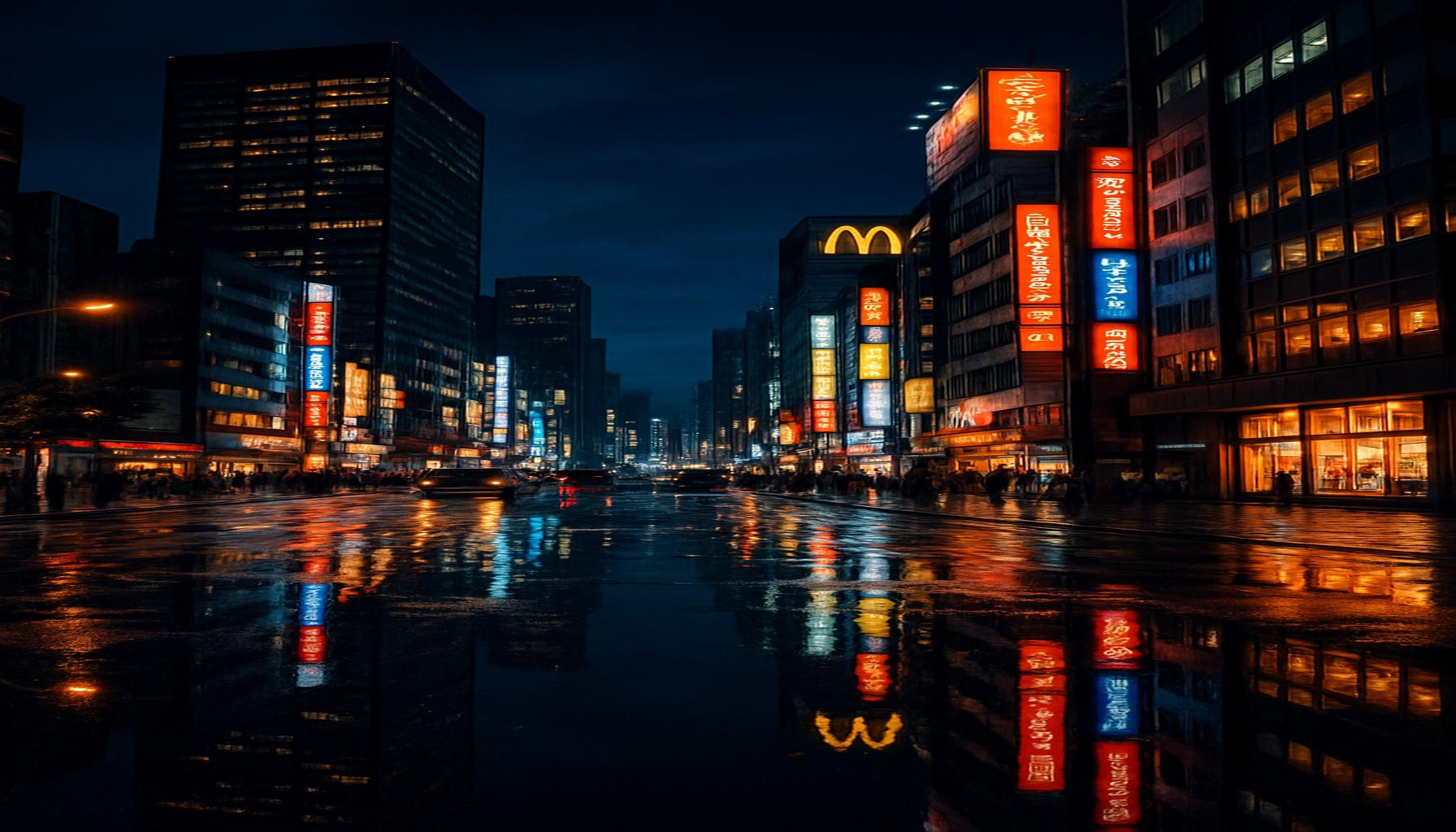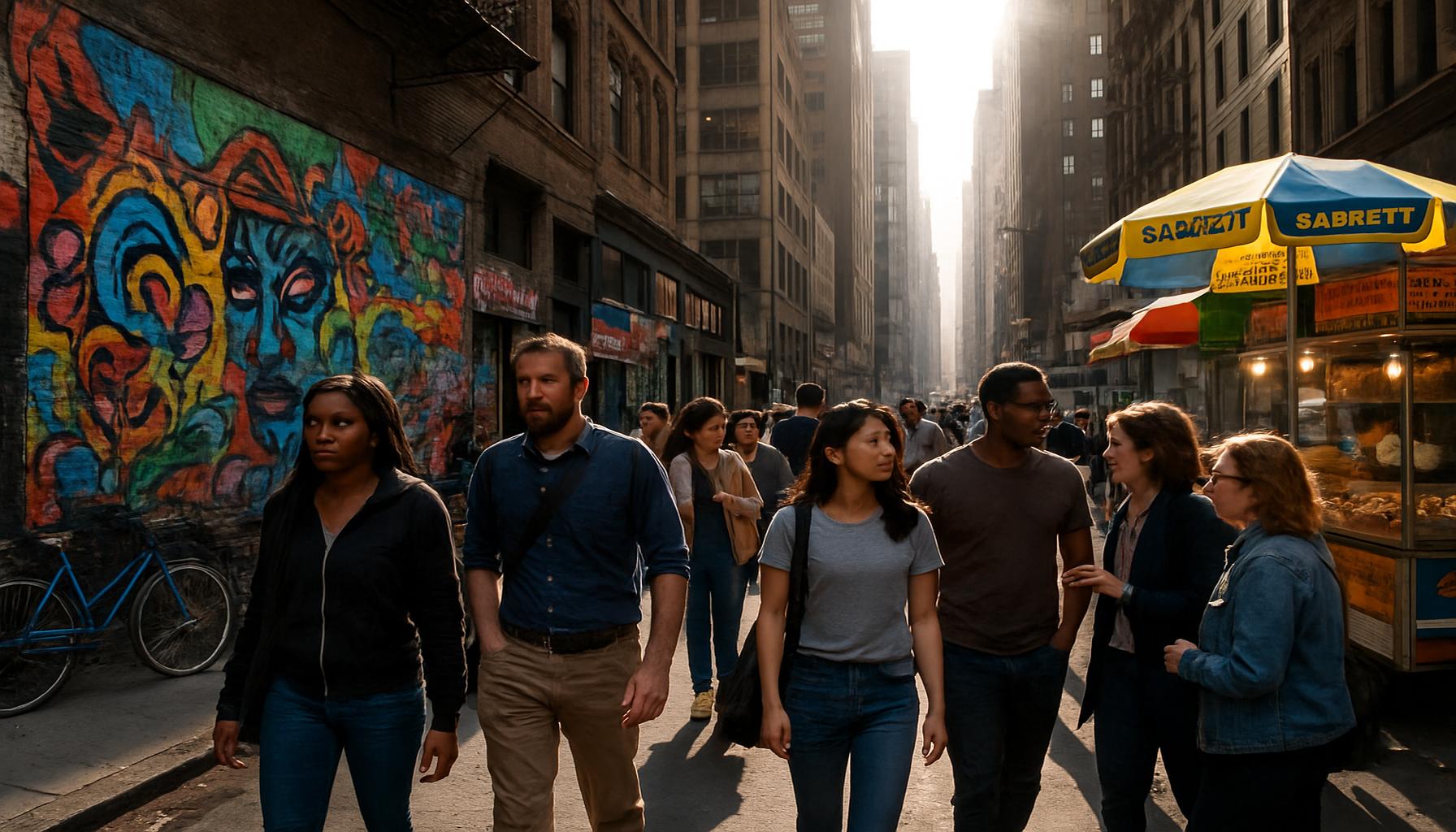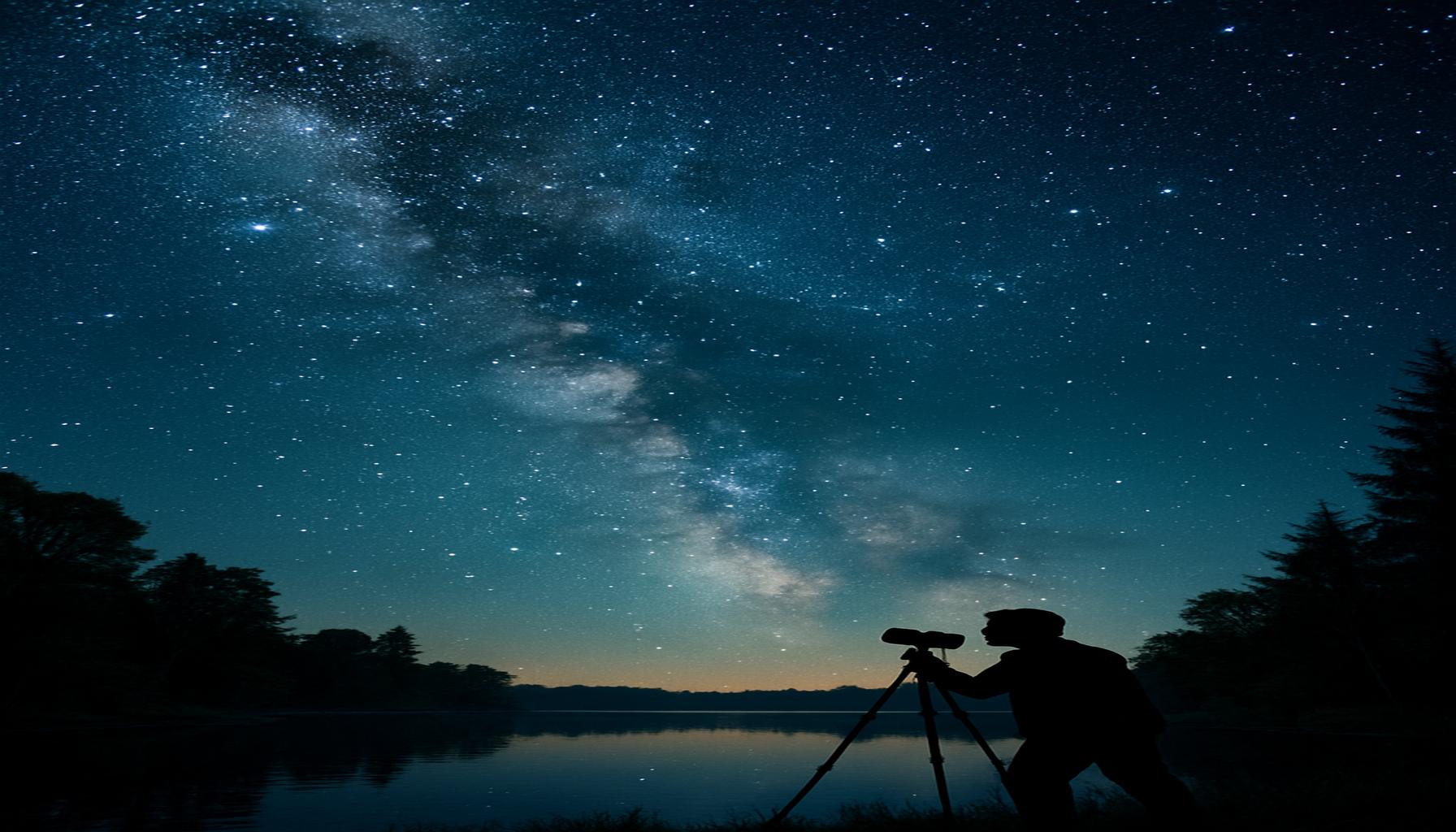Event Photography: Tips for Capturing Special Moments with Style and Creativity

The Art of Capturing Timeless Moments
Event photography transcends the mere act of taking photographs; it is an intricate blend of artistry and storytelling. Each click of the shutter chronicles the essence of significant life events—be it the joyous celebration of a wedding, the solemnity of a graduation, or the dynamic atmosphere of a corporate event. The ability to encapsulate these moments in style and creativity is what separates great photographers from the rest.
To refine your photography skills and create impactful images, consider the following essential aspects:
- Preparation: Familiarizing yourself with the event schedule is vital. Understanding when speeches will occur, when the couple will share their first dance, or even when the cake will be cut allows you to position yourself strategically and anticipate those fleeting, pivotal moments that exemplify the event’s spirit.
- Lighting: Mastery of both natural and artificial lighting techniques can dramatically enhance your photographs. For example, during outdoor weddings, leveraging the golden hour—approximately one hour before sunset—can yield stunning, warm-lit portraits. In contrast, understanding how to manipulate indoor lighting, such as using flash or reflectors, can help you capture vibrant images even in dimly lit settings.
- Equipment: Familiarity with your camera and its settings is critical to achieving optimal results. Be it a high-end DSLR or a mirrorless camera, knowing your gear inside out—including features like ISO, shutter speed, and aperture—enables you to adapt quickly to changing conditions without missing a moment.
- Candid Moments: Some of the richest and most compelling images arise from spontaneous interactions and genuine emotions. From a child’s laughter to a couple’s intimate whisper, capturing these authentic instances fosters a connection with viewers, reinforcing the event’s emotional significance.
Investing time in meticulous planning and developing a deeper understanding of your subjects promotes the creation of striking photos that resonate with audiences. In essence, knowing the unique narrative of the event allows you to become more than just an observer; you evolve into an integral part of the unfolding story.
Engaging further with guests can inject life into your photographs. Simple actions, like striking up conversations or posing questions, not only make guests feel valued but also allow you to present their stories visually. By approaching each assignment with an open mind and a original perspective, you can elevate standard snapshots into extraordinary memories that people will cherish for years to come.
In the bustling world of event photography, where every click captures a once-in-a-lifetime experience, embracing these techniques can truly unleash your creative potential, transforming your portfolio and enhancing your storytelling prowess.
DISCOVER MORE: Click here to find out how art can change your life
Planning and Strategy: The Backbone of Successful Event Photography
Effective event photography begins long before the first shutter click. The preparation phase is a fundamental element that sets the stage for your photographic journey. It involves comprehensive research, timely communication with event organizers, and an eye for detail. Understanding the timeline of events is not merely a luxury; it is a necessity. It ensures that you will be in the right place at the right time to capture those unforgettable moments, from heartfelt speeches to spontaneous laughter.
To enhance your preparedness, consider the following strategies:
- Scout the Venue: If possible, visit the event venue ahead of time. Familiarize yourself with the layout, identify potential backdrops, and locate sources of natural light. A pre-event visit enables you to envision your shots and plan accordingly, creating a mental map that allows for seamless navigation during the actual event.
- Create a Shot List: While spontaneity is key, having a predetermined shot list ensures you don’t miss crucial moments. Include essential moments like the cake cutting or the first dance, but also think creatively about unique perspectives that could encapsulate the event’s atmosphere. This comprehensive approach balances structured shots with the freedom to capture unexpected moments.
- Coordinate with Key Individuals: Establish rapport with the event planners, coordinators, or family members involved. They can provide insights about critical moments to capture and offer assistance in navigating the crowd. Additionally, they might highlight individuals who should be featured prominently in your photographs, adding depth to your storytelling.
- Preparation with Equipment: Ensure your equipment is in optimal condition before the event. Charge batteries, format memory cards, and pack essential lenses compatible with varying lighting and shooting conditions. An unexpected technical hiccup can lead to missed moments, so being prepared will alleviate potential stress during the event.
Incorporating these strategies into your planning will not only alleviate stress on the event day but also enhance your ability to capture the essence of the occasion. Remember, the principle of photography is not just about the technical aspects—it also involves connecting with the emotions and stories unfolding before your lens. True artistry lies in understanding the flow of the event and becoming an unobtrusive part of the experience.
As you develop your strategy, keep in mind that the magic of event photography revolves around the interplay of anticipation and creativity. Every gathering has its own pulse and narrative; your role as a photographer is to honor that story through compelling imagery. This understanding not only lays a strong foundation for your approach but also empowers you to take risks creatively, allowing you to capture moments that resonate profoundly with those who experience them.
Advanced Techniques for Stunning Event Photography
In the world of event photography, capturing those fleeting, special moments requires not only technical skills but also a creative eye. Here are some advanced techniques that can help elevate your photography and ensure that each shot tells a story.
Utilize Natural Light
Harnessing natural light can dramatically enhance the mood of your event photos. Early mornings or late afternoons provide the best soft lighting; positioning your subjects in a way that takes advantage of sunlight can create beautiful, warm images. Always be prepared to adjust your camera settings to adapt to changing light conditions.
Employ Different Angles
Don’t be afraid to move around and experiment with different angles. Capturing the same scene from distinct perspectives can yield varied and dynamic results. Consider shooting from a low angle to give your subjects a sense of grandeur or from above to add an element of surprise.
Incorporate Movement
Event photography thrives on capturing action. Whether it’s a dancer twirling or guests laughing, incorporating movement into your shots can add life and energy. Use a faster shutter speed to freeze the moment or a slower shutter speed to convey motion, creating compelling visuals that capture the essence of the event.
Create Connection
Strong event photography often revolves around human connection. Focus on capturing genuine emotions, interactions, and candid moments between your subjects. These genuine snapshots convey stories and resonate deeper with viewers. Building rapport with your subjects can often lead to more intimate and meaningful shots.
Post-Processing Techniques
Editing plays a significant role in the finishing touches of your photographs. Utilize software like Adobe Lightroom or Photoshop to enhance colors, contrast, and sharpness. Correcting white balance and experimenting with presets can also help maintain a consistent aesthetic that aligns with the event’s theme.Embracing these advanced techniques ensures that your event photography not only captures special moments but also reflects your unique style and creativity, compelling viewers to engage with your work. As you develop these skills, your portfolio will grow, establishing your reputation as a sought-after event photographer.
DIVE DEEPER: Click here to learn about the evolution of crafting
Mastering the Art of Timing and Composition
Once the planning stage is complete, diving into the heart of event photography requires a mastery of timing and composition. Capturing the right moment is pivotal; it often transforms a good photo into a spectacular one. Understanding how to anticipate and react to fleeting moments provides photographers with the ability to tell captivating stories through their images.
The key to exceptional timing lies in observation and awareness. Keep your eyes peeled for the subtle interactions and candid moments that add depth to your collection. For instance, at weddings, timing is crucial during the emotional exchanges between the bride and groom, from the tears during the vows to the laughter during the reception. By adopting a proactive stance, photographers can capture genuine emotions that often represent the event’s true spirit.
To enhance your timing capabilities:
- Use Continuous Shooting Mode: This setting allows photographers to shoot multiple frames per second, increasing the chance of capturing that elusive moment. Whether it’s a child blowing out birthday candles or the first kiss as partners become newlyweds, continuous shooting can be a real game-changer.
- Be Patient: Sometimes the best moments are those that unfold over time. Wait and watch the surroundings before you react. The anticipation of a child’s laughter or a surprise proposal may yield unforeseen, candid shots that convey more emotion and storytelling than posed images.
- Practice the “Decisive Moment” Philosophy: Coined by celebrated street photographer Henri Cartier-Bresson, this concept emphasizes the importance of capturing the perfect moment when elements of a scene align harmoniously. Continually practice this approach by paying attention to the unfolding scene, ready to click when everything comes together.
In addition to timing, composition impacts the visual storytelling aspect of event photography. A well-composed photograph provides context, emotion, and a sense of connection with the moment captured. Here are several composition techniques to explore:
- Rule of Thirds: Divide your frame into a grid of nine equal sections. Place your subject along these lines or their intersections to create a more engaging image. This technique is effective in guiding the viewer’s eye toward the focal point of your shot.
- Leading Lines: Use natural or architectural lines within the event space to draw attention to the subject. For example, the aisle of a wedding venue or the pathways in an outdoor event can lead the viewer’s gaze and create a sense of depth.
- Framing: Incorporate elements in the environment to frame your subjects. This approach adds layers to your composition and emphasizes the subjects within the context of the event. Use doorways, branches, or even guests in the foreground to draw attention to the main action.
The ability to capture the essence of an event lies at the intersection of anticipation, timing, and composition. By sharpening these skills, you can create striking images that resonate with the energy and stories of the special moments you encounter. Whether it’s a jubilant celebration or a serene gathering, understanding these elements will empower you to elevate the artistry of your event photography.
DISCOVER MORE: Click here to learn how music enhances creativity
Conclusion: Elevating Your Event Photography Skills
In the realm of event photography, the magic lies in the ability to fuse timing, composition, and creativity into a cohesive narrative that tells the story of an occasion. By employing the techniques discussed, such as understanding the dynamics of emotional moments and mastering composition strategies, photographers can create unforgettable images that resonate deeply with viewers. Remember, every event—whether a wedding, birthday party, or corporate gathering—has its own unique atmosphere and emotions waiting to be captured.
As you step into your next event, embrace the principles of anticipation and observation. Look beyond the obvious to discover the subtleties that reveal the true essence of the moment. Utilize tools like continuous shooting mode and the decisive moment philosophy to ensure that not a single precious expression or laugh goes undocumented. Additionally, experimenting with composition techniques, like the rule of thirds and framing, can elevate your images well beyond the average snapshot.
Ultimately, the goal of event photography is to document moments with style and creativity, allowing others to relive those experiences long after the event has passed. So equip yourself with knowledge, be innovative, and don’t hesitate to explore new approaches in your photography journey. As you refine your skills, you will discover new ways to visually articulate the unforgettable stories that unfold before you—transforming ordinary snapshots into extraordinary memories.


